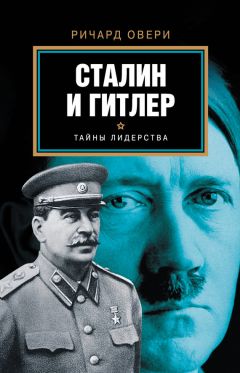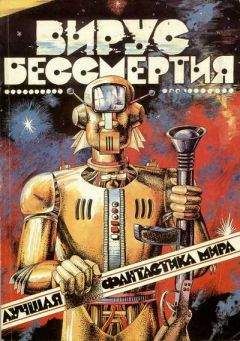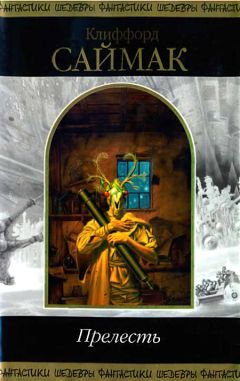Ричард Овери - Сталин и Гитлер

Помощь проекту
Сталин и Гитлер читать книгу онлайн
71. Dwork and van Pelt, Auschwitz, pp. 194–6; P. Steinberg Speak You Also: a Survivor’s Reckoning (London, 2001), pp. 66–71.
72. A. Solzhenitsyn One Day in the Life of Ivan Denisovich (London, 1963), p. 143.
73. Sofsky, Order of Terror, p. 118; Nohan, Birkenau: Camp of Death, p. 39.
74. Pingel, Häftlinge unter SS-Herrschaft, pp. 114–16.
75. Parvilahti, Beria’s Gardens, pp. 109, 125.
76. See for example K. Dunin-Wasowicz Resistance in the Concentration Camps (Warsaw, 1982).
77. Morrison, Ravensbriick, pp. 130–33.
78. Pohl, Stalinist Penal System, p. 31.
79. Morrison, Ravensbriick, p. 365; J. Bardach and K. Gleeson Man is Wolf to Man: Surviving the Gulag (Berkeley, Calif., 1998) pp. 191–3.
80. Steinberg, Speak You Also, p. 72.
81. Bardach and Gleeson, Man is Wolf to Man, pp. 227–8.
82. For example Parvilahti, Beria’s Gardens, pp. 118, 125; see too, Pingel, Häftlinge unter SS-Herrschaft, p. 135.
83. Dallin and Nicolaevsky, Forced Labor, p. 6.
84. Bardach and Gleeson, Man is Wolf to Man, pp. 247–9.
85. Y. Shymko (ed.) For This Was I Born (Toronto, 1973), p. 41; D. Panin The Notebooks ofSologdin (New York, 1976).
86. Steinberg, Speak You Also, p. 77.
87. Morrison, Ravensbrück, pp. 289–91.
88. Parvilahti, Bend’s Gardens, pp. 99–100; Bardach and Gleeson, Man is Wolf to Man, p. 236.
89. Pohl, Stalinist Penal System, pp. 14–16; B. Perz Projekt Quarz: Steyr-Daimler-Puch und das Konzentrationslager Melk (Vienna, 1991), p. 300; Parvilahti, Beria’s Gardens, pp. 132–3.
90. Steinberg, Speak You Also, p. 22.
91. Barton, Vinstitution concentrationnaire, pp. 78–9; Bardach and Gleeson, Man is Wolf to Man, p. 213.
92. L. Crome Unbroken: Resistance and Survival in the Concentration Camps (London, 1988), pp. 54, 56–7; see too Kaienberg, ‘Vernichtung durch Arbeit’, p. 56.
93. Werth and Moullec, Rapports secrets, pp. 377–82: Report from N. Ezhov, March 1938 ‘on the state of a number of labour camps’; Report of the GUlag operational department, 17 May 1941 on the camp at Sredne-Belsk; Report of deputy chief of GUlag operational department, 23 October 1941 on rising mortality at Aktiubinsk.
94. Crome, Unbroken: Resistance and Survival, p. 62.
95. U. Herbert Best: Biographische Studien über Radikalismus, Weltanschauung und Vernunft 1903–1989 (Bonn, 1996), p. 151; Tuchel, ‘Dimensionen des Terrors’, p. 381.
96. Sofsky, Order of Terror, p. 16.
97. I. Müller Hitler’s Justice: the Courts of the Third Reich (London, 1991), p. 56.
98. M. Kárný ‘Das SS-Wirtschafts-Verwaltungshauptamt’, in Hamburger Stiftung zur Förderung von Wissenschaft und Kultur (ed.) ‘Deutsche Wirtschaft’: Zwangsarbeit Von KZ-Häftlingen für Industrie und Behörden (Hamburg, 1991) pp. 160–64; F. Piper ‘Industrieunternehmen als Initiatoren des Einsatzes von KZ-Häftlingen’, in Hamburger Stiftung, ‘Deutsche Wirtschaft’, pp. 97–103. Out of 500,000 workers approximately 230–250,000 worked in private sector fi rms.
99. Herbert, Best, pp. 169–70.
100. Barton, L’institution concentrationnaire, p. 56; Shapovalov, Remembering the Darkness, p. 207.
101. P. Levi The Drowned and the Saved (London, 1988), p. 100.
Заключение
1. P. Sorokin The Sociology of Revolution (New York, 1967) pp. 185–6.
2. V. M. Berezhkov At Stalin’s Side (New York, 1994), pp. 7, 72.
3. Berezhkov, At Stalin’s Side, p. 7.
4. See for example L. Dupeux Strategie communiste et dynamique conservatrice: essai sur les differents sens de Vexpression ‘National-Bolchevisme’ (Paris, 1976).
5. T. Todorov Hope and Memory: Refl ections on the Twentieth Century (London, 2003), p. 25 ff.
6. E. H. Vieler The Ideological Roots of German National Socialism (New York, 1999), p. 125; see also D. Gasman The Scientifi c Origins of National Socialism (London, 1971), pp. 147–65.
7. ‘The International Character of the October Revolution’ in J. Stalin Problems of Leninism (Moscow, 1947), pp. 198–203.
8. A. Ulam Expansion and Co-Existence: a History of Soviet Foreign Policy 1917–1967 (London, 1968) p. 78.
9. H. Mehringer Die NSDAP als politische Ausleseorganisation (Munich, 1938), p. 5.
10. W. Treue ‘Hitlers Denkschrift zum Vierjahresplan 1936’, Vierteljahreshefte für Zeitgeschichte, 3 (1955), p. 201.
11. ‘Der Schlussrede des Führers auf dem Parteikongress 1934’ in G. Neesse Die Nationalsozialistische Deutsche Arbeiterpartei (Stuttgart, 1935), p. 195.
12. Treue, ‘Denkschrift’, p. 202.
13. For details on the Gestapo’s Jewish offi ces see H. Berschel Bürokratie und Terror: Das Judenreferat der Gestapo Düsseldorf 1935–1945 (Essen, 2001).
14. H. Rauschning Hitler Speaks (London, 1939), p. 257.
15. P. Reidel ‘Aspekte ästhetischer Politik im NS-Staat’ in U. Hermann and U. Nassen (eds.) Formative Ästhetik im Nationalsozialismus. Intentionen, Medien und Praxisformen totalitärer ästhetischer Herrschaft und Beherrschung (Weinheim, 1994), p. 14.
16. G. C. Guins Soviet Law and Soviet Society (The Hague, 1954), p. 30. In a teacher’s manual from 1940 schoolchildren were to be instructed ‘to hate their country’s enemies’. See D. Brandenberger National Bolshevism: Stalinist Mass Culture and the Formation of Modern Russian National Identity 1931–1956 (Cambridge, Mass., 2002), p. 65.
17. See in general J. Stalin On the Opposition (Peking ed., 1974), speeches and articles from the 1920s on problems of party unity and party disagreements.
18. E. van Ree ‘Stalin’s Organic Theory of the Party’, Russian Review, 52 (1993), p. 52.
19. P. Stachura Gregor Strasser and the Rise of Nazism (London, 1983), p. 75.
20. Neesse, Nationalsozialistische Partei, p. 10.
21. See for example the discussion in I. Gutkin The Magic of Words: Symbolism, Futurism, Socialist Realism’ in B. G. Rosenthal The Occult in Russian and Soviet Culture (Ithaca, NY, 1997), pp. 241–4.
22. G. Alexopoulos Stalirfs Outcasts: Aliens, Citizens, and the Soviet State 1926–1936 (Ithaca, NY, 2002) esp. ch. 2.
23. T. Alkemeyer and A. Richantz ‘Inszenierte Körperträume: Reartikulation von Herrschaft und Selbstbeherrschung in Körperbildung des Faschismus’ in Hermann and Nassen, Formative Ästhetik, pp. 82–3.
24. See for example S. Plaggenborg ‘Gewalt und Militanz im Sowjetrussland 1919–1930’, Jahrbücher für die Geschichte Osteuropas, 44 (1996), pp. 409–30.
25. M. Pabst Staatsterrorismus: Theorie und Praxis kommunistischer Herrschaft (Graz, 1997), p. 15.
26. Stalin, Works, vol. 6, p. 121.
27. G. A. Wetter Dialectical Materialism: a Historical and Systematic Survey of Philosophy in the Soviet Union (New York, 1958), pp. 221–2.
28. F. Kroll Utopie als Ideologie: Geschichtsdenken und politisches Handeln im Dritten Reich (Paderborn, 1998), pp. 56–64, 84–8.
29. Uncensored Germany: Letters and News Sent Secretly from Germany to the German Freedom Party (London, 1940), p. 80, ‘Letter from a Tradesman’, September 1939.
30. A. Resis (ed.) Molotov Remembers: Inside Kremlin Politics (Chicago, 1993), p. 264, interview 12 April 1973.
31. A. Gide Back from the U.S.S.R. (London, 1937), pp. 45, 48.
32. Gide, Back from the U.S.S.R., p. 45.
33. M. Heller Cogs in the Soviet Wheel: the Formation of Soviet Man (London, 1988), p. 287; see also the discussion on language in E. Naiman ‘Introduction’ to A. Platanov Happy Moscow (London, 2001), pp. xxxi – xxxvii.
34. V. Klemperer 7 Shall Bear Witness: the Diaries of Viktor Klemperer 1933–41 (London, 1998), pp. 227, 243.
35. S. Allen Comrades and Citizens (London, 1938), pp. 244, 301.
36. This is a point well-made in I. Halfi n ‘Poetics in the Archives: the Quest for “True” Bolshevik Documents’, Jahrbücher für die Geschichte Osteuropas, 51 (2003), pp. 84–9. Language, Halfi n argues, is itself ‘constitutitive’.
37. Allen, Comrades and Citizens, pp. 229,
Иллюстрации
Подписание Пакта Молотова – Риббентропа, 1939 г.
Иосиф Сталин и Сергей Киров в Смольном 1927 г.
Адольф Гитлер, фюрер и рейхсканцлер нацистской Германии
Адольф Эйхман, оберштурмбанфюрер СС, начальник отдела по «еврейскому вопросу» в Гестапо
Мартин Борман, обергруппенфюрер СС, личный секретарь фюрера и начальник Партийной канцелярии
Адольф Гитлер и главнокомандующий люфтваффе Герман Геринг обсуждают ход боев в Польше
Альфред Йодль, начальник штаба оперативного руководства вермахта
Йозеф Геббельс, имперский министр народного просвещения и пропаганды, был великолепным оратором и осуществлял жесткий контроль за пропагандистской машиной Третьего рейха
Йозеф Геббельс поздравляет с наградой молодого солдата, 1945 г.
Теодор Эйке, обергруппенфюрер СС, глава системы концлагерей в Германии
Ф. Решетников. Клятва (Речь И.В. Сталина на II Всесоюзном съезде Советов 26 января 1924 г.) (фрагмент)
Г. Щегал. Вождь, учитель и друг (И.В. Сталин в Президиуме II съезда колхозников-ударников) (фрагмент)
В. Вихтинский, Б. Жуков, Е. Левин, Л. Шматько. Во имя мира (подписание договора о дружбе, союзе и взаимопомощи между Советским Союзом и Китайской Народной Республикой (фрагмент)
Выборы в Верховный Совет СССР. И. Сталин, К. Ворошилов и Н. Ежов на 58-м избирательном участке
























